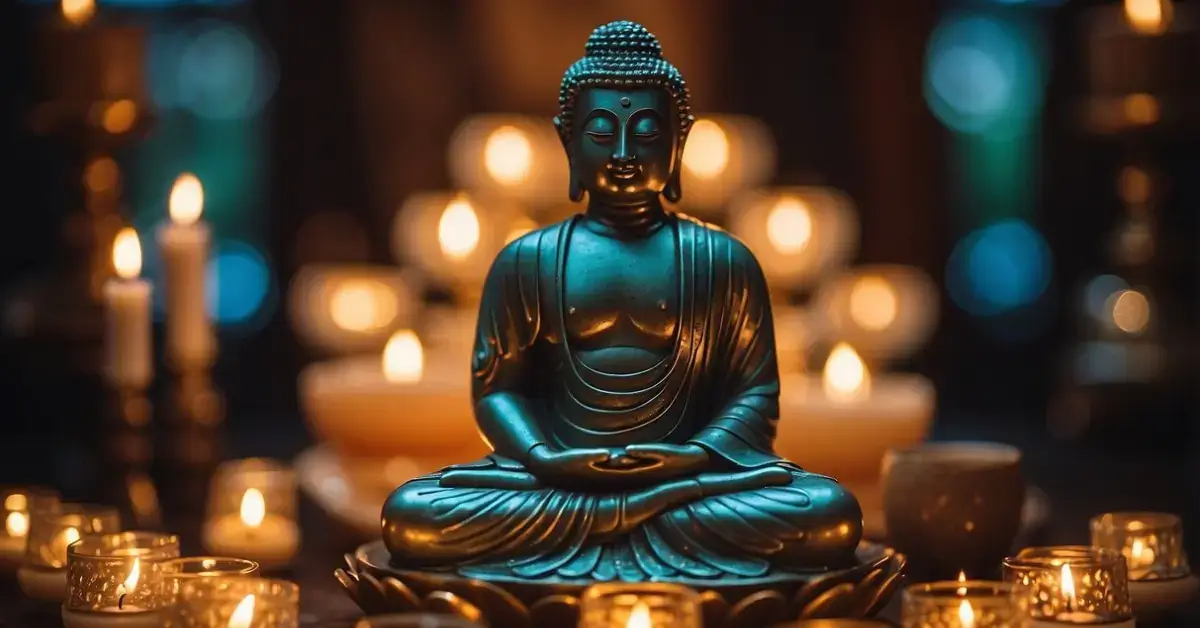Wondering “how do you spell Buddha” correctly? This guide will help you understand the correct spelling and significance of the name, ensuring you never get it wrong again. Dive in to explore the rich history and importance of this revered figure’s name.
Spelling and Pronunciation of ‘Buddha’
The word “Buddha” has roots in both English and Sanskrit. I’ll guide you through its historical context, spelling guidelines, and proper pronunciation to help you get it right.
English and Sanskrit Origins
“Buddha” is spelled B-u-d-d-h-a. This term originates from the Sanskrit word “Budh,” meaning to wake up, perceive, or become aware. The past participle form, “Buddha,” means “enlightened” or “awakened.”
Buddha, also known as Siddhartha Gautama, founded Buddhism. The spelling reflects both the English adaptation and its Sanskrit roots. “Budha,” with a single ‘d’, means “awakened” or “enlightened” in Hinduism and is distinct from “Buddha,” despite their similar origins.
Guidelines for Pronunciation
Pronouncing “Buddha” involves saying “Boo-duh.” The first part sounds like “boo,” and the second part like the first syllable in “duh.”
To perfect your pronunciation, you can listen to audio samples. Cambridge Dictionary provides audio clips for practice. The key is to emphasize the short ‘u’ sound in both syllables while maintaining a gentle transition between them. Consistent practice will make you confident in pronouncing “Buddha” correctly.
Historical and Religious Context

Siddhartha Gautama, also known as the Buddha, is a central figure in the history and practice of Buddhism. His life story and teachings have shaped the religious and cultural landscapes of Asia and beyond.
The Life of Siddhartha Gautama
Siddhartha Gautama was born a prince in Lumbini, near Kapilavastu, located in modern-day southern Nepal. Growing up in luxury, he was shielded from the harsh realities of life. However, upon witnessing suffering, sickness, and death, he felt compelled to seek the truth of human existence.
At the age of 29, Siddhartha renounced his royal life and embarked on a spiritual quest. After years of ascetic practices, he realized that extreme self-denial was not the path to enlightenment. It was under the Bodhi tree, in deep meditation, that Siddhartha attained awakening and became the Buddha, the “Awakened One”.
Buddhism and Enlightenment
The Buddha’s enlightenment marked the foundation of Buddhism, a religion focused on overcoming suffering and achieving spiritual awakening. His teachings, known as the Dharma, emphasize the Four Noble Truths and the Eightfold Path as the means to enlightenment.
Buddhism encourages followers to develop wisdom, ethical conduct, and mental discipline. Practices like meditation and mindfulness are central to attaining enlightenment, or Nirvana, a state of liberation from suffering. Today, Buddhism encompasses various traditions and has millions of adherents worldwide, reflecting the enduring impact of the Buddha’s revelations.
Artistic and Cultural Depictions

Artistic and cultural depictions of the Buddha vary widely, reflecting the diverse traditions and languages where Buddhism has influenced art. From the intricate statues of Thailand to paintings in Japan, each culture brings its unique touch to how the Buddha is represented.
Imagery in Different Cultures
Buddha statues and images often carry distinct features unique to each culture. In Thailand, for example, the Standing Buddha sculptures are gilded and tall, embodying elegance and serenity. Japanese depictions also reflect poise, often showcasing a seated Buddha with a peaceful expression.
In China, the Buddha is sometimes represented as the Laughing Buddha, a rotund, joyful figure symbolizing happiness and prosperity. The Reclining Buddha, found in various cultures such as Thailand and Vietnam, depicts the Buddha lying on his side, indicating his final moments before entering Nirvana. These diverse artistic expressions underscore the local interpretations of Buddhist teachings.
Variations Across Languages
The word “Buddha” is spelled differently across languages, which can sometimes reflect cultural nuances. In Sanskrit and Pali, it’s spelled as “Buddharūpa” to indicate the “Form of the Awakened One.” In Japanese, it is written as 仏 (hotoke), while in Chinese, it appears as 佛 (simplified) or 佛陀 (traditional).
European languages also have variations. In Italian, it’s “Buddha,” in French and German, it’s also “Buddha,” pretty consistent across several European tongues. In Hindi, it is spelled बुद्ध and in Arabic, it is بوذا. Understanding these variations is essential when consulting bilingual dictionaries or traveling in regions with rich Buddhist heritage. Each spelling carries cultural significance, capturing the essence of Buddhist art and philosophy.
FAQ – How Do You Spell Buddha
What does Buddha mean in English?
In English, “Buddha” means “Enlightened One” or “Awakened One.” It refers to someone who has attained full enlightenment and insight into the true nature of existence.
Does Buddha mean god?
Buddha does not mean god. It refers to an enlightened being who has achieved profound spiritual understanding and liberation from suffering. Buddhism does not worship Buddha as a god but honors him as a teacher.
What is the proper name for Buddha?
The proper name for Buddha is Siddhartha Gautama. He is also known as Shakyamuni Buddha, meaning “Sage of the Shakya Clan,” to distinguish him from other buddhas in Buddhist tradition.
If you liked this blog post about the topic: How Do You Spell Buddha, don’t forget to leave me a comment down below to tell me about your experience with it. Or have a look at my other articles:
- How to Pray When Under Spiritual Attack: A Friendly Guide
- How to Get Closer to God Spiritually: Simple Steps
- How Many Spiritual Gifts Are There: A Friendly Guide
- How to Be More Spiritual: Simple Daily Practices
Feel free to also check out our other Articles from the category “Spirituality“ and don’t forget to follow us on Pinterest.


